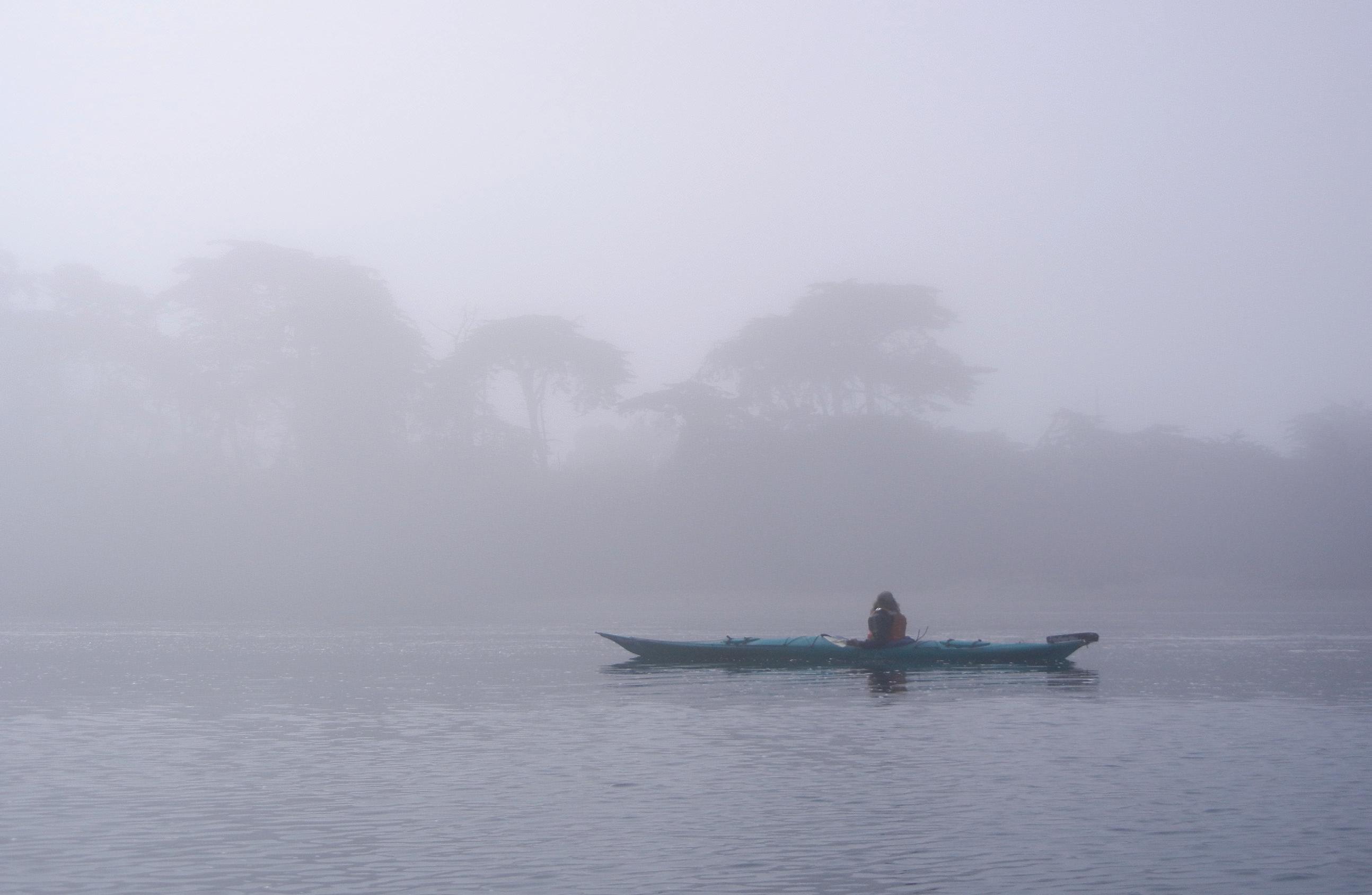Tidal Exchange
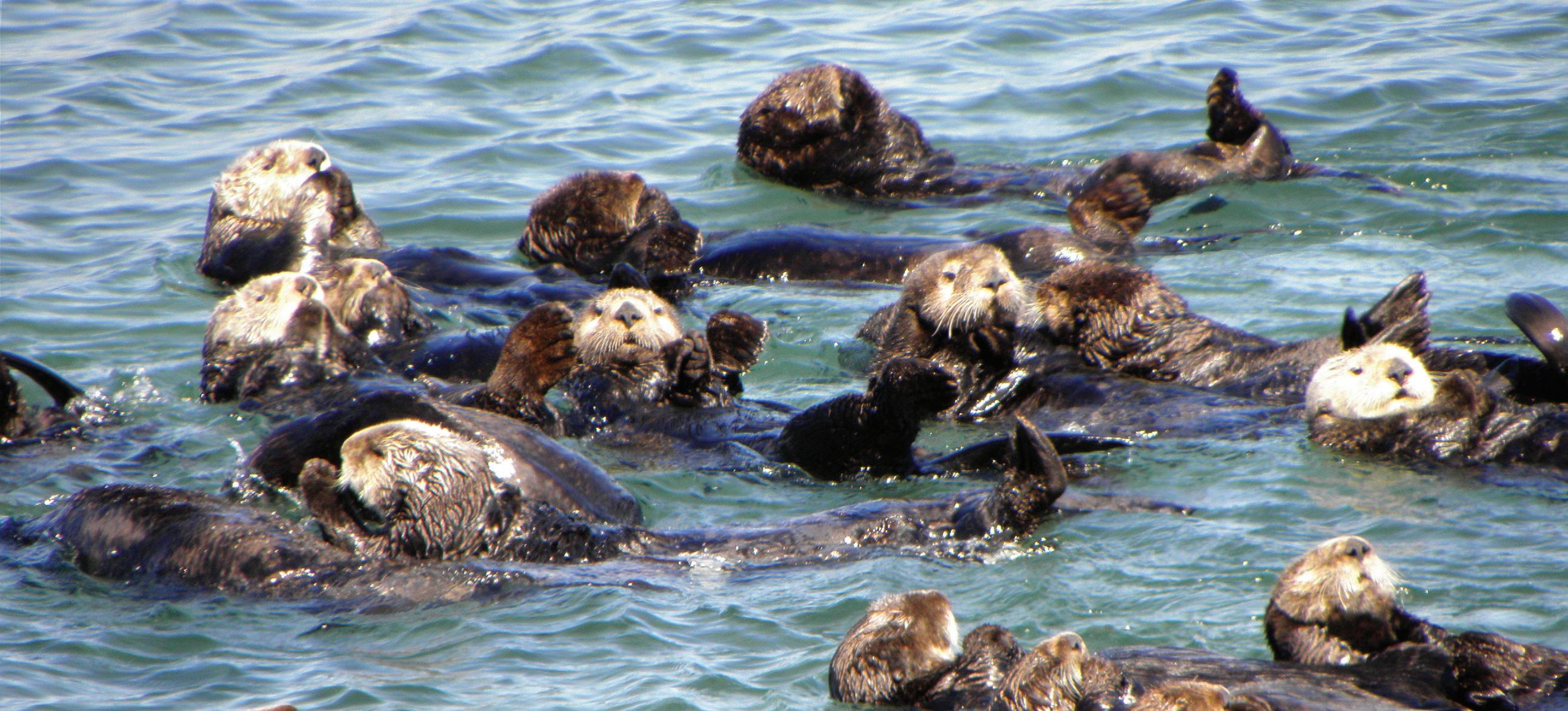


Avocets, brown pelicans, chestnut-backed chickadees, dark-eyed juncos, eared grebes, Forester’s terns… no, we aren’t going to list every bird at the Slough, that would take too long. Throughout any year, more than 340 bird species can be seen here. It’s pretty amazing. But the quantity of birds is not what makes this place special – it’s the diversity. And not just the birds – there are species of every sort crawling, swimming, growing and flying throughout Elkhorn Slough.
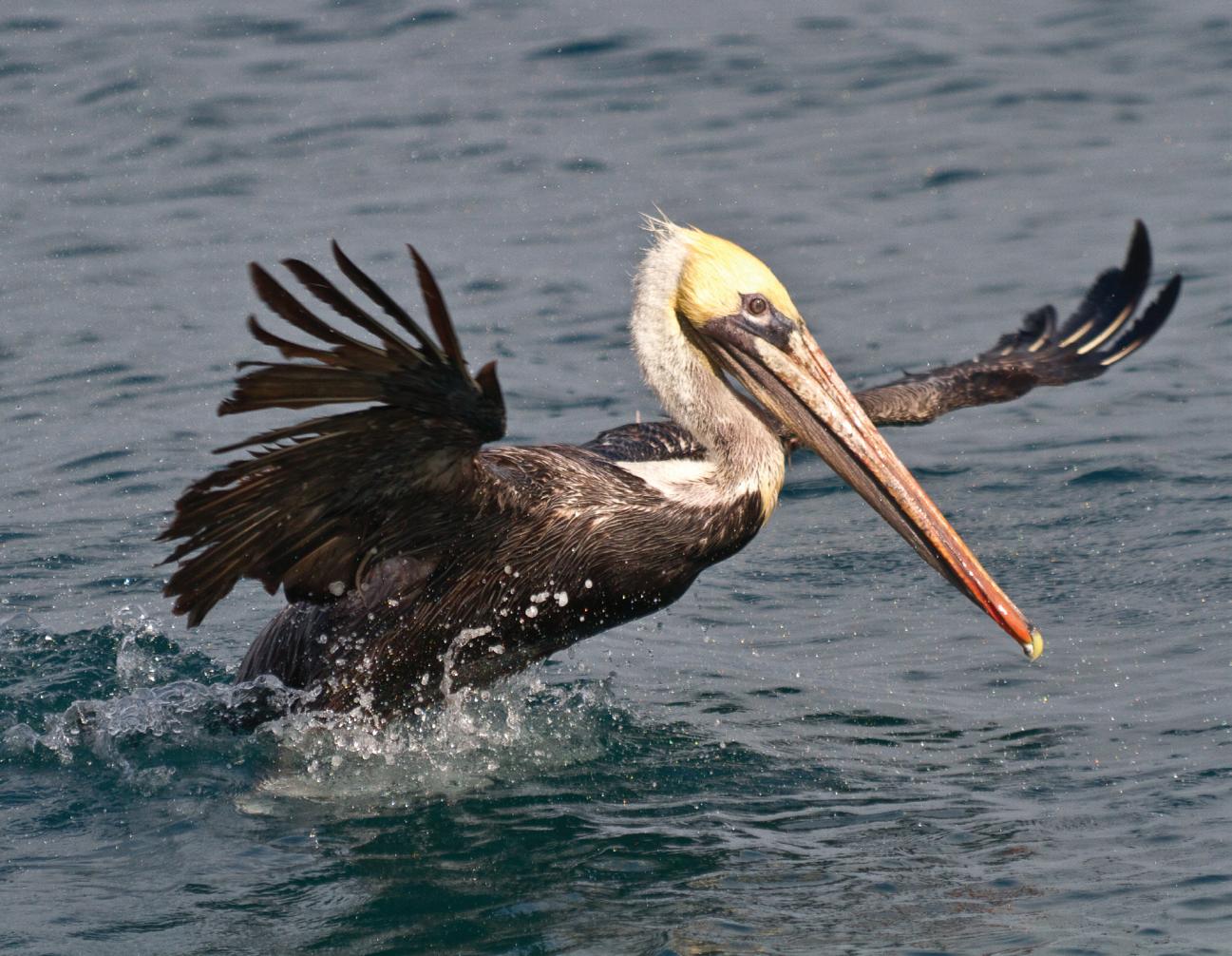
Our waters teem with threatened Southern sea otters foraging for clams and raising their pups. The Sea Otter Research and Conservation (SORAC) program at the Monterey Bay Aquarium releases rescued sea otters here, and the Slough’s shallow marsh inlets are used as a nursery. Otters here display behaviors not frequently seen elsewhere, like resting on marsh plants and walking on land.
Endangered tidewater gobies also use the slough as a nursery – its quiet waters, full of eelgrass, provide a perfect shelter for eggs and larvae. A look in the freshwater ponds on the Reserve and surrounding hills will reveal Santa Cruz long-toed salamanders or California red-legged frogs. The Slough is one of only a handful of known locations inhabited by these beautiful (and threatened) amphibians.
While you might think of charismatic fauna when you hear “endangered species,” the term also refers to flora, like the Santa Cruz tarplant. You’ll find this plant on California native grasslands and coastal prairie habitat here at Elkhorn Slough. Its aroma has been described as a tangerine and Christmas-tree blend. At one time it could be seen and smelled throughout the bay area, but today it is found only in Monterey and Santa Cruz counties –99% of its native grassland habitat has disappeared in the past 200 years.
And of course there are the birds. You’ll find endangered western snowy plovers, the recently delisted brown pelican (pictured above), and so many more.
These are the kinds of sights, sounds, and smells we all wish we could experience every day. And at Elkhorn Slough, you can.

elkhorn Slough foundAtion
BoArd of directorS
Steve Webster preSident
Steve Dennis Vice preSident
C. Michael Pinto treASurer
Judith Connor SecretAry
Ed Boutonnet
Terry Eckhardt
Steve Green
Robert Hartmann
Kent Marshall
Anne Olsen
Anne Secker
Lydia Villarreal
Tom Williams
Mary Wright
Mark Silberstein executiVe director
The mission of The elkhorn slough foundaTion is To conserve and resTore elkhorn slough and iTs waTershed.
we See elkhorn Slough And itS wAterShed protected foreVer–A working lAndScApe, where people, fArMing, induStry, And nAture thriVe together. AS one of cAliforniA’S lASt greAt coAStAl wetlAndS, elkhorn Slough will reMAin A wellSpring of life And A Source of inSpirAtion for generAtionS to coMe
po Box 267, MoSS lAnding
cAliforniA 95039
tel: (831) 728-5939
fAx: (831) 728-7031
www elkhornSlough org
tidAl exchAnge
Quinn White, editor
To celebrate our 30 years of conserving this special place, the Elkhorn Slough Foundation recently awarded eleven students a scholarship to Camp SEA Lab’s “Elkhorn Slough and You!” summer camp program. In this weeklong day camp students discover native species, see plankton under microscopes, experience up-close encounters with marine life, and help restore rare wetland habitat.
The Elkhorn Slough Foundation Conservation Education Scholarship for The Les Strnad Award honors Les Strnad’s contributions to science education and wetland conservation in Monterey County. Les pioneered the establishment of the National Estuarine

Research Reserve and co-founded Camp SEA Lab, a program that fosters life-long excitement and scientific understanding about our coasts and oceans for youth, families, and teachers. By learning about Elkhorn Slough through this scholarship, these eleven students gained a sense of responsibility for the watershed and appreciation for ESF’s work to protect this vital environment. The Foundation is proud to have developed this scholarship to share the wonders of this place with young minds. It is a fitting tribute to honor Les’ contributions to keep the slough protected for future generations.
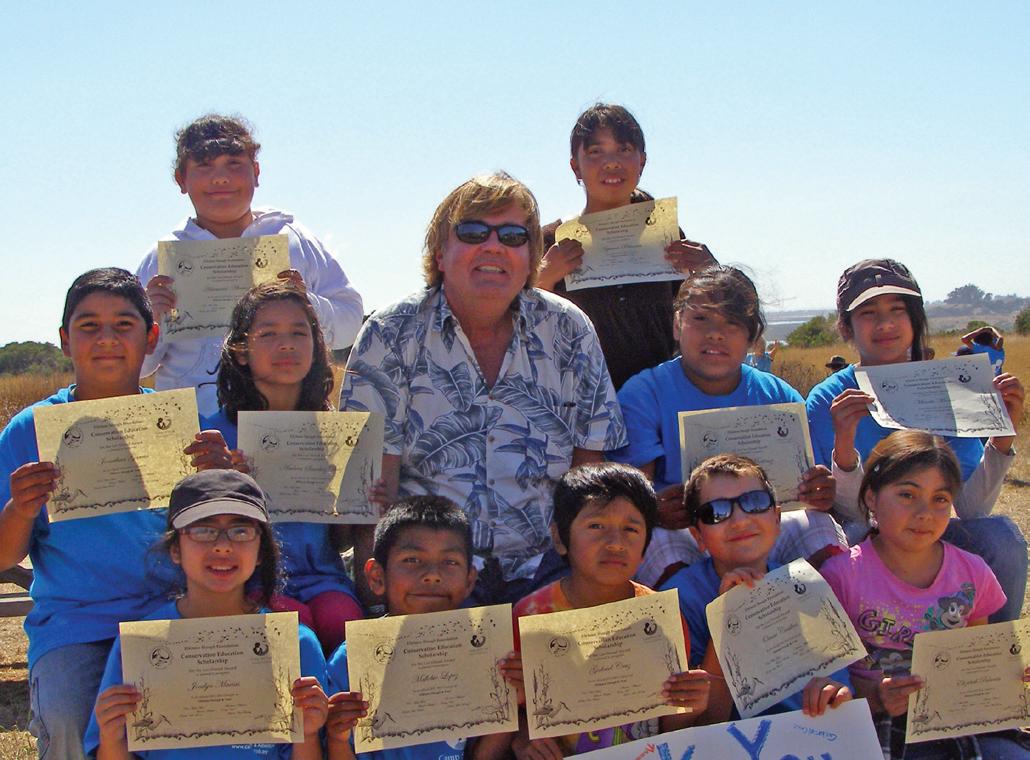
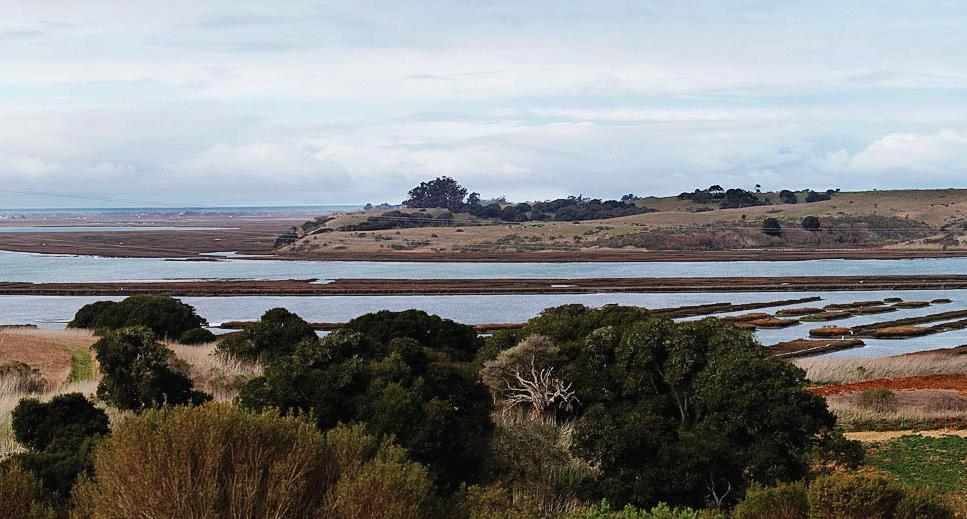
One hundred years ago, the shores of Elkhorn Slough were flanked with extensive tidal marsh. About half of the marsh habitat present in Elkhorn Slough in 1870 has been lost, largely due to diking and draining of the land for conversion to agricultural use. By the 1930s and 40s much of the salt marsh on the slough’s southern and eastern shores had been diked off from the rest of the estuary. These wetlands were then drained, and as the rich spongy peat soils dried up the land subsided, dropping by up to several feet in elevation. Decades later when the dikes failed or were intentionally breached and the tides returned, these subsided marshes were too low to support plant life. One hundred fifty acres of marsh in Elkhorn Slough have been lost in the past 60 years alone because of this subsidence, and unless some action is taken an estimated 500 more acres are predicted to disappear in the next 50 years due to sea level rise.
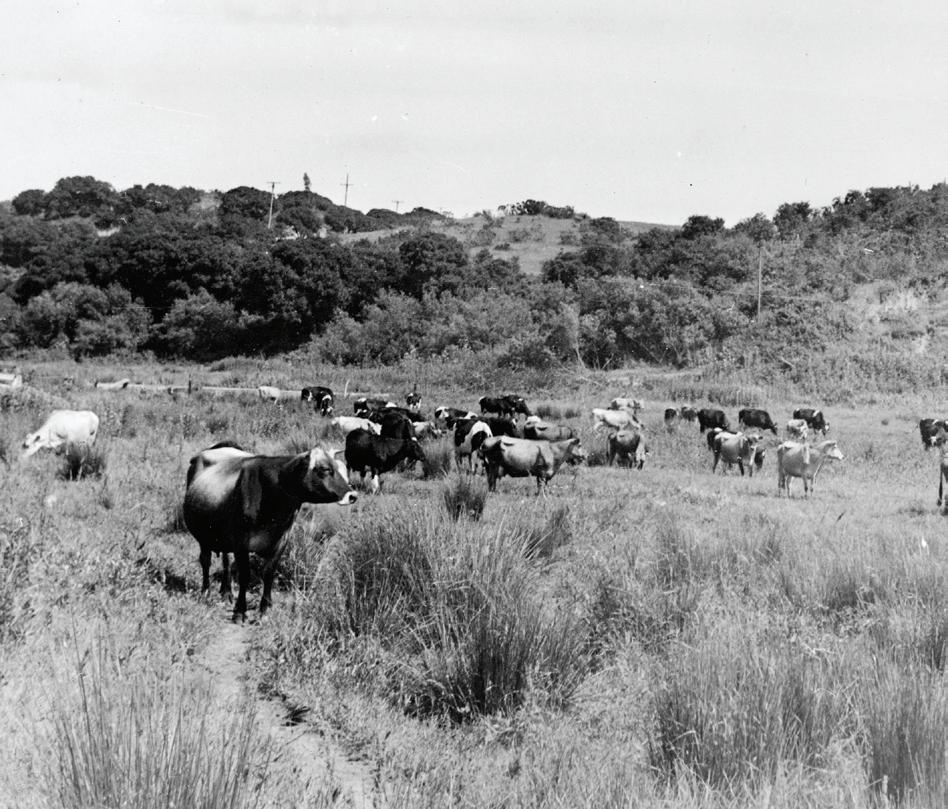
ESF and ESNERR are taking action to protect the rare marshes of Elkhorn Slough by restoring degraded wetlands through sediment addition, addressing many of the problems this scarce habitat faces due to past land use. The beneficial reuse of sediment is a common wetland restoration method in California. By adding sediment to restore wetlands to their historic elevations we can produce marshes that are fully integrated into the cycles of the estuary: the exchange of water, minerals, nutrients and organisms. ESF and ESNERR plan to undertake a restoration effort, dubbed the Tidal Marsh Restoration project, which will add sediment to former marshes in Elkhorn Slough, returning the land to the proper elevation for marsh plants to thrive. If successful, research indicates that plants will begin to colonize the restoration site and help create and capture sediment, jump-starting the process that sustains healthy tidal marsh habitats. Sediment that was bound for landfills will instead be placed in key areas of the slough (only if it meets our stringent requirements), and used to build new marsh. We anticipate the restored wetlands will create many benefits to people and wildlife, including improving water quality, providing reproductive habitat for fish and birds, and sequestering carbon to slow climate change.
Projects like this one increase the chances that marshes in the estuary will survive a changing climate, making Elkhorn Slough more resilient in the face of accelerating sea level rise. As stewards of Elkhorn Slough, part of our job is to right the wrongs of the past; part of the job is also to look forward to how the watershed will be used by future generations. The Tidal Marsh Restoration project does both.
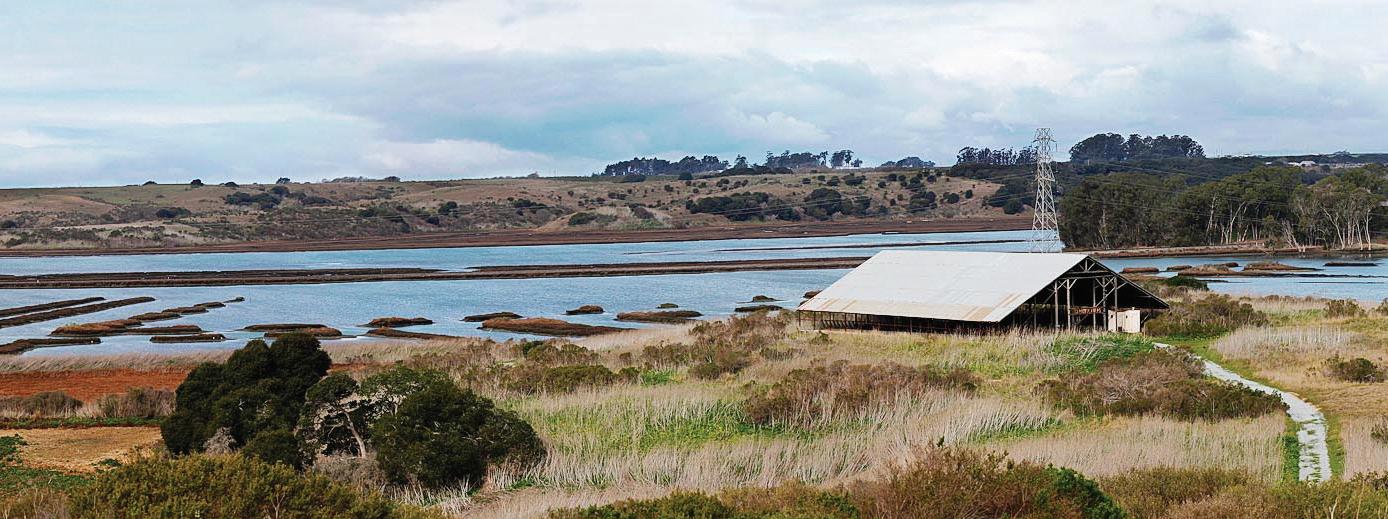
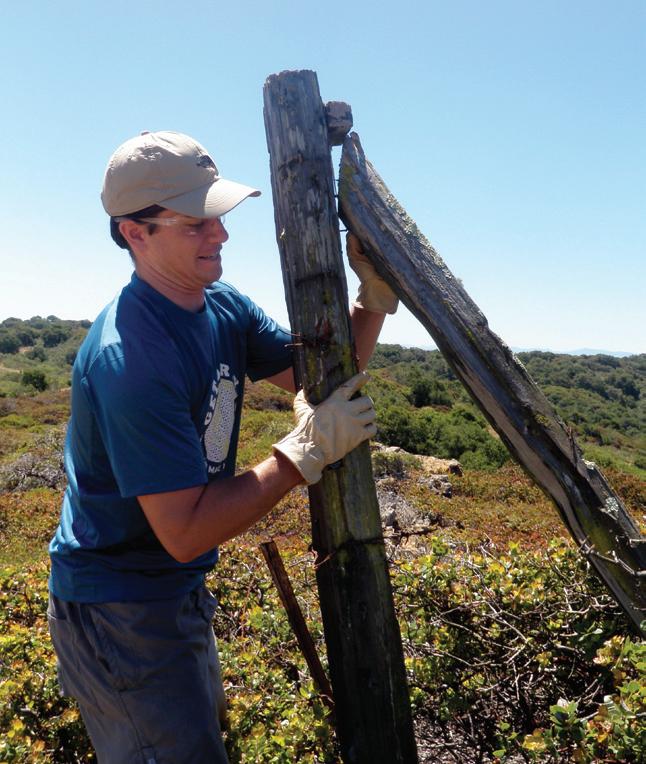
When selecting land to steward, ESF considers many variables, one of which is: does this property border land already under our care? Managing contiguous stretches of land is more efficient than trying to steward and monitor many parcels here and there. However, sometimes the land we manage consists of properties that were once owned by multiple people, who separated their properties with fences (as most neighbors do).
The Elkhorn Slough Foundation knows that old property fences don’t belong in a protected watershed, which is why we work with volunteers from HSBC, REI, Green Mountain Coffee Roasters and more to remove them. Last year alone we removed 3,700 feet of rusty barbed wire fencing from the watershed. Sometimes this meant donning a hazmat suit in sweltering heat to get through a patch of poison oak with wire cutters, and sometimes it meant carefully avoiding delicate native plants, but fence removal is a labor-intensive, tiring task with a lot of rewards.
The biggest reason we remove fencing is wildlife safety. Fencing traps animals, injures them, and keeps them out of prime habitat, reducing their resources for survival. It also separates potential mates and forces animals to travel along paths that may not have much cover from predators. Eliminating these relic fences allows animals to move naturally from place to place through opened corridors, expanding their territories and increasing their chances of survival.
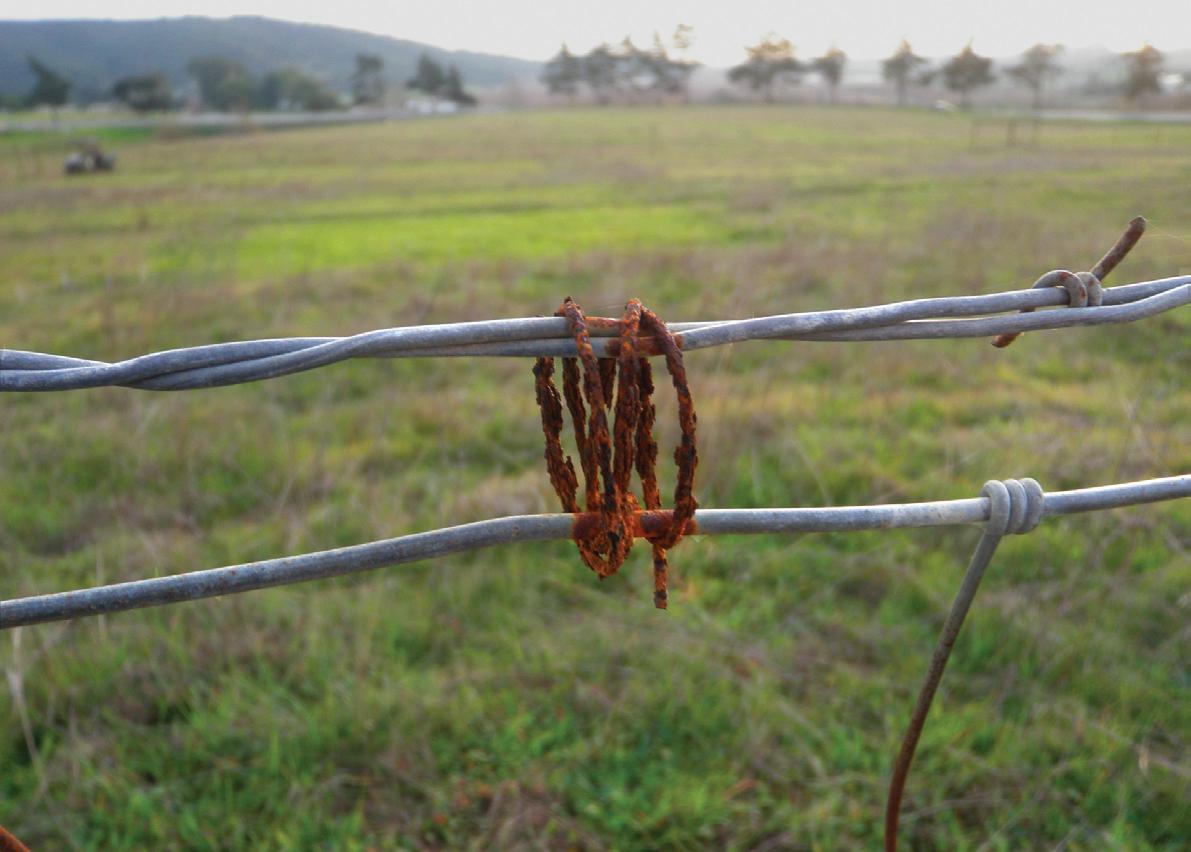

Physicist David Fried and artist Diann Russell have lived in the area for more than 30 years and joined the Foundation’s Stewardship Circle in 2002. They did so because they are avid protectors of the watershed and active in their community.
“I love the sheer beauty of the slough. It’s a real jewel, and it amazes me how many people have worked to protect it,” says Diann. “We love the research done here and the management, too. There are so many great minds involved at the slough.”
While these days you might see them in some local theater at the Western Stage or seeing an opera in San Francisco, their shared interests in water conservation and protecting the Elkhorn Slough brought this couple together. They are “hands-on” in caring for the watershed and have been part of the Coastal Clean-Up every year, helping to keep roads and beaches clean from litter.
Still one of their favorite activities is to share the slough with their grandchildren, hiking the trails and looking for wildlife. If you’ve walked the trail at Kirby Park you have likely seen them – they go there all the time. “It’s nearby, it’s comfortable, and it lets you get close to the mud,” says David.
Perhaps the reason David and Diann are so committed to the Elkhorn Slough is because, like the slough, they too bring science and art together to celebrate something truly unique.
Do you remember learning that there is life all around you too small for you to see? Tiny creatures swimming in a single drop of water in the ocean? At the Elkhorn Slough Reserve, that feeling is experienced by schoolchildren using microscopes for the first time to explore the slough’s tiniest life forms.
Students on field trips here get a big lesson in the scale of life. Not only is there rare and exciting wildlife all around, there are dozens of species that they never knew about invisible to the naked eye. “It’s an eye-opening experience that

Have you ever wondered why you rarely find a young seedling among those majestic oaks? Or wondered why some of our wildest places were dominated not by woodlands, but by chamise and other chaparral-type shrubs?
ESNERR’s Geographical Ecologist Eric Van Dyke studied these questions for more than a decade before retiring this June. For the past 11 years, he has used a multi-faceted approach to describing salt marsh sustainability at the estuary. His work combines data on water levels, marsh elevations, sediment and vegetation cover, as well as integrated historical data sets, current condition monitoring, and modeling to explore future scenarios.
This research documented conversion from manzanitadominated maritime chaparral to oak woodland and other habitat types throughout the Elkhorn Slough watershed. Researching the slough itself, dramatic conversions from marsh to mudflat and open water were analyzed.
gets many young minds excited to explore the world around them,” says Education Coordinator Kenton Parker. “It is wonderful to come in to work and nurture a budding love of science in future generations.”
With the help of passionate educators, one of the Elkhorn Slough Foundation’s first accomplishments was developing the curriculum for the Reserve’s Education Program. As new scientific discoveries are made and technology improves the Education program is updated, yet the results are the same: students leave the Elkhorn Slough with a new appreciation and sense of wonder for the world around them.
Today the Education Program is lead by the Department of Fish and Game staff of the Elkhorn Slough Reserve and boasts a state-of-the-art education lab and a cadre of trained naturalists. The program reaches more than 7,000 students annually, and that number grows as we certify more and more teachers to lead field trips at
The goal of this research has not been solely the restoration of land, but rather ensuring its stability and integrity. A stable ecosystem can tolerate changes without suffering long-term damage. Ecosystem integrity assures that all of the system’s essential components will remain in place after change has occurred.
Successful conservation doesn’t build barriers or prevent change; it eliminates barriers and thereby enhances the system’s ability to accommodate change, strengthening its integrity and enhancing its stability. This kind of analysis is useful in informing the management of coastal ecosystems, especially as global climate change causes the rate of habitat change to accelerate.
Eric’s pioneering work is one of the reasons Elkhorn Slough is considered a model for how coastal monitoring can allow Reserves to be “sentinel sites” for climate change.

the Reserve. “Every time I hear a child gasp in surprise at the sight of a slithering snake, a squirming shrimp, or a hawk swooping at its prey,” says Kenton, “I smile knowing that this is something the Reserve will do for many more years to come.”
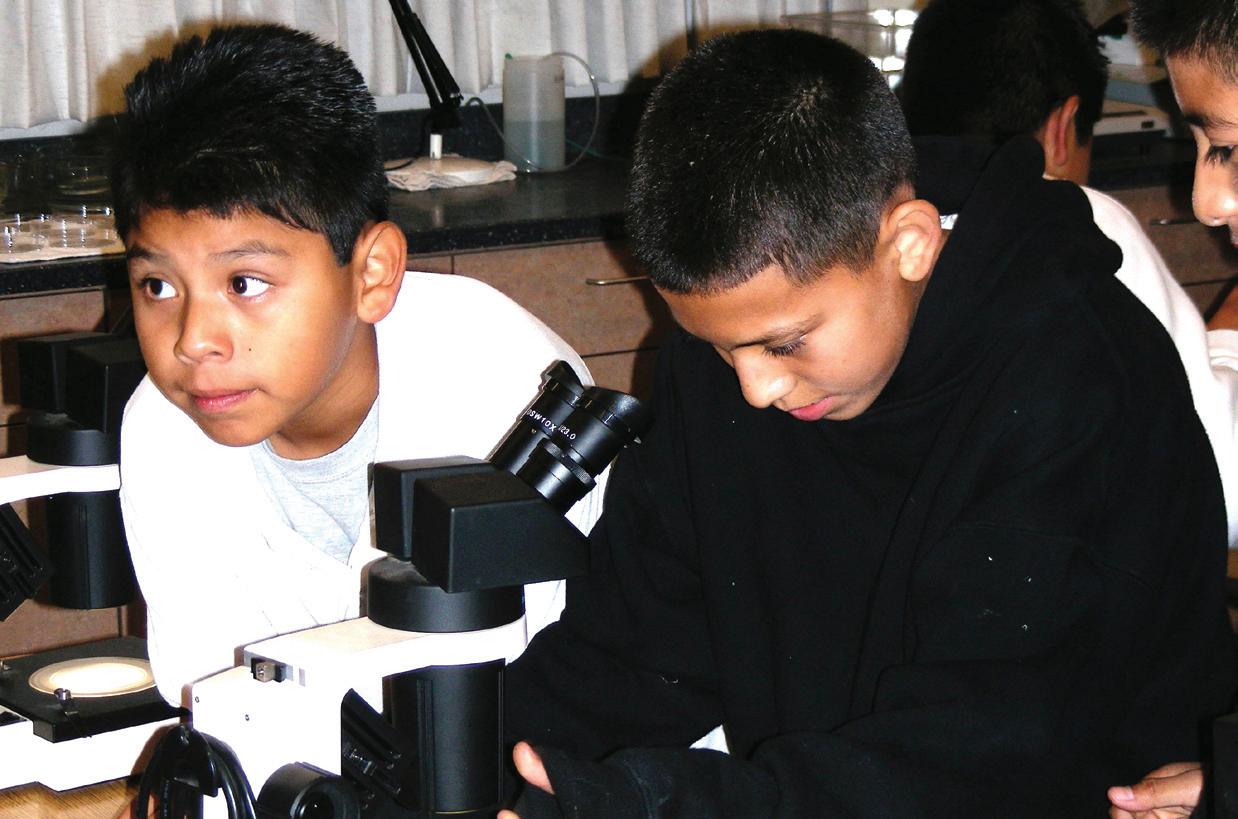

In the plant world timing is everything. Temperature and moisture must be just right for plants to grow, and these criteria vary with the changing seasons. For Stewardship Specialist Bree Candiloro, this means paying careful attention to the natural world around her as she determines the best time to plant a seed or to go collecting fresh seeds to sow. It also means simulating wildfires and winters.
Our stewardship team implements a ‘disturbance regime’ for a few special plants that require a natural event to wake their seeds from a dormant state, allowing them to germinate. For oaks it means placing acorns in the refrigerator to trick them into thinking they’ve survived a cold snap – the chill tells these acorns that the time is right to start growing. For manzanita it means making a ‘manzanita lasagna’ (layering soil, manzanita berries, more soil, pebbles and pine needles in a fireproof pot) then setting it on fire to simulate the natural wildfires that trigger it and other chaparral plants to start growing.
Disturbance regime lets us raise all sorts of plants for restoration work, including elderberry, ceanothus and coffeeberry –plants that often won’t produce until a winter or wildfire passes through. Using this technique helps grow the plants needed to restore habitats like oak woodland, coastal sage scrub and chaparral by waking the seeds of key vegetation.
If you want to learn more about disturbance regime, or the native plants raised in the greenhouse, consider attending Elkhorn Slough’s second Native Plant Fair on October 6th. It will be your chance to learn about plants, how to care for them, and even purchase them for your own home garden.
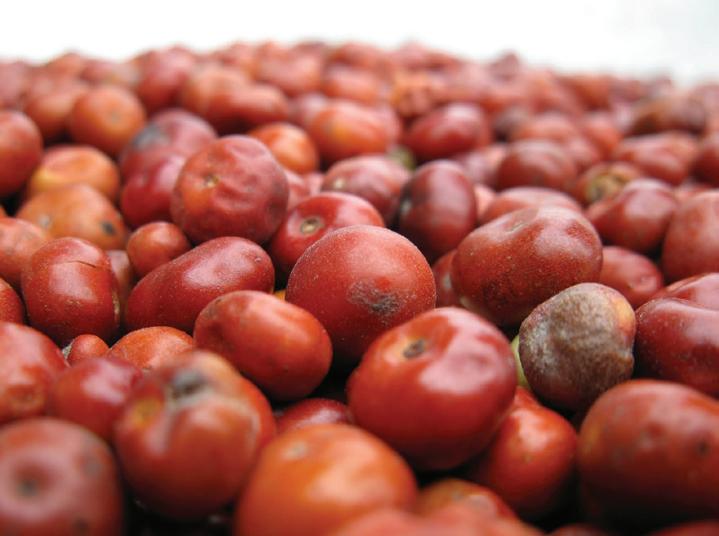
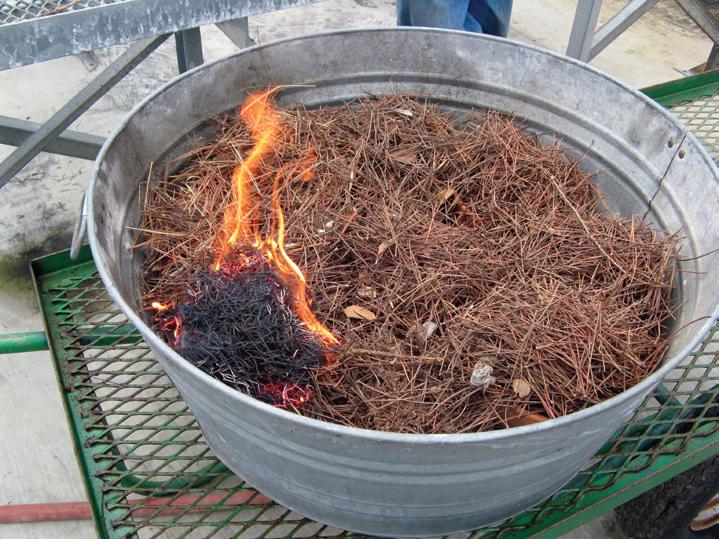
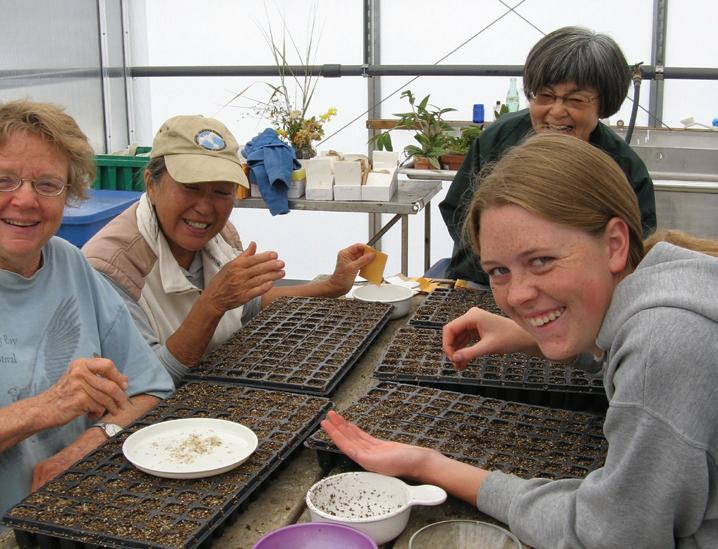

After an exhilarating start,
give seedlings
plants that had germinated in a refrigerator.
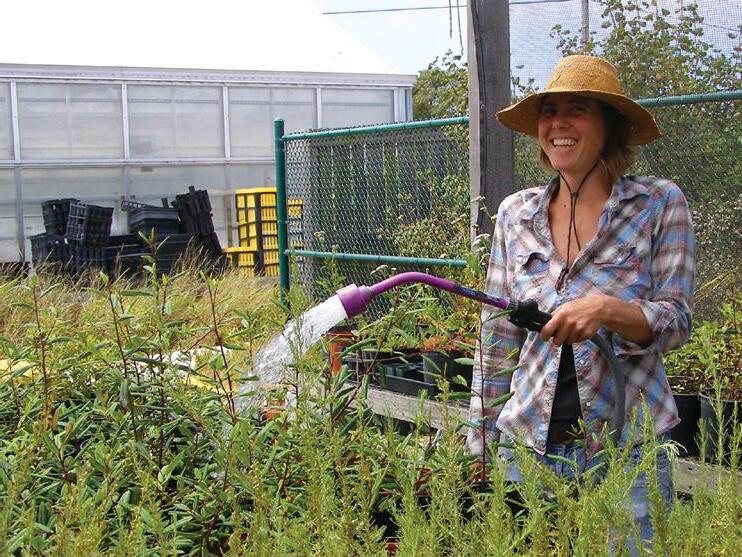
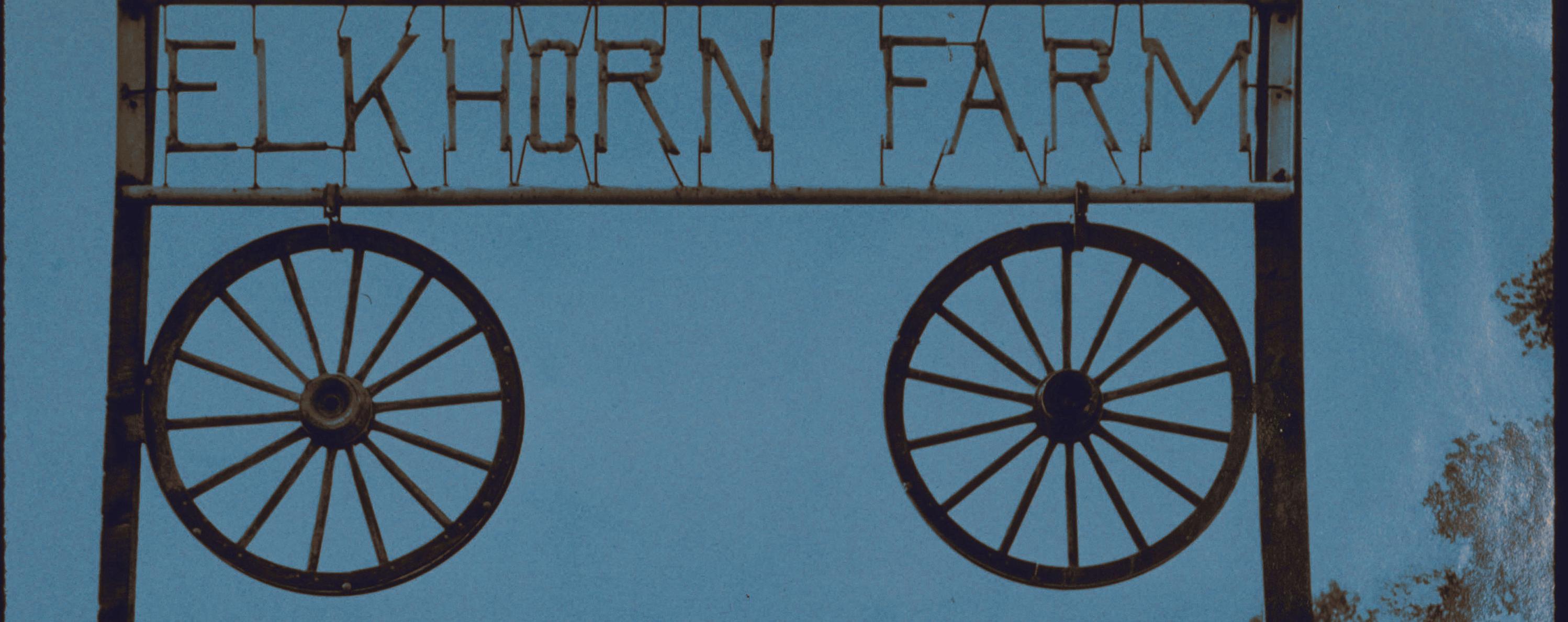
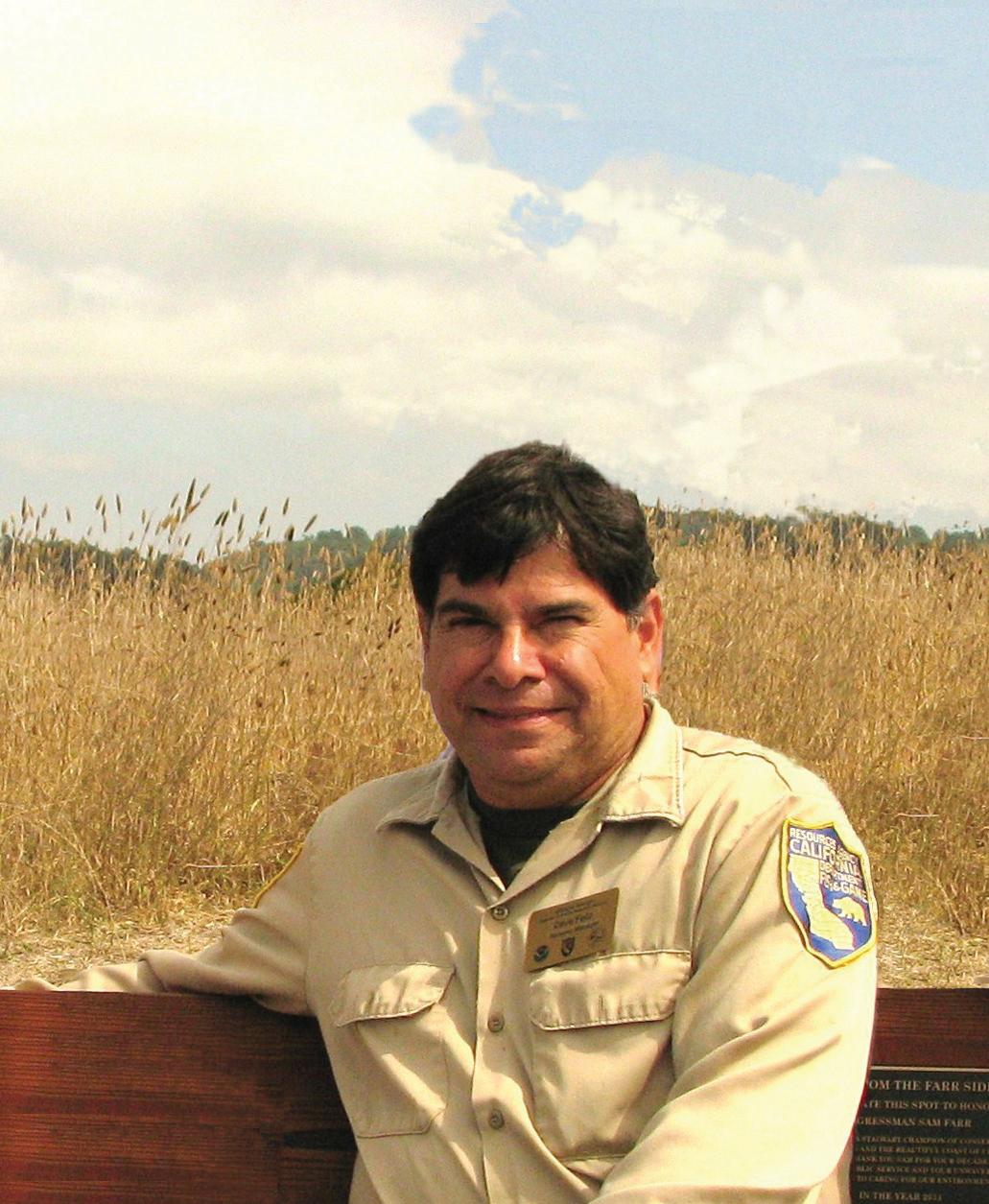
pArtnerShip
Dave Feliz, Reserve Manager
It was just about a year ago that I took over the role as Reserve Manager here at Elkhorn Slough. It’s been an amazing year and not a day goes by without me learning something important about this place. One of the first things that become clear when you work at the Elkhorn Slough is the number and sophistication of the various partnerships that exist here.
The Department of Fish and Game is the lead State agency for conserving California’s fish, wildlife and habitat resources. Fulfilling our stewardship and public use opportunity responsibilities is nearly impossible without help, so one of the Department Strategic Initiatives is to develop and enhance partnerships. Partnerships play a critical role in providing fresh and creative ideas, interacting with local communities and stretching our limited resources.
The Elkhorn Slough Reserve stands out in the Department as an excellent example of a successful partnership. The Reserve thrives in the multiple cultures of the Federal (NOAA) and State (DFG) governments, as well as the non-profit Elkhorn Slough Foundation. Each culture brings resources to the relationship and the result is a better adapted Reserve. None of us could have accomplished this alone.
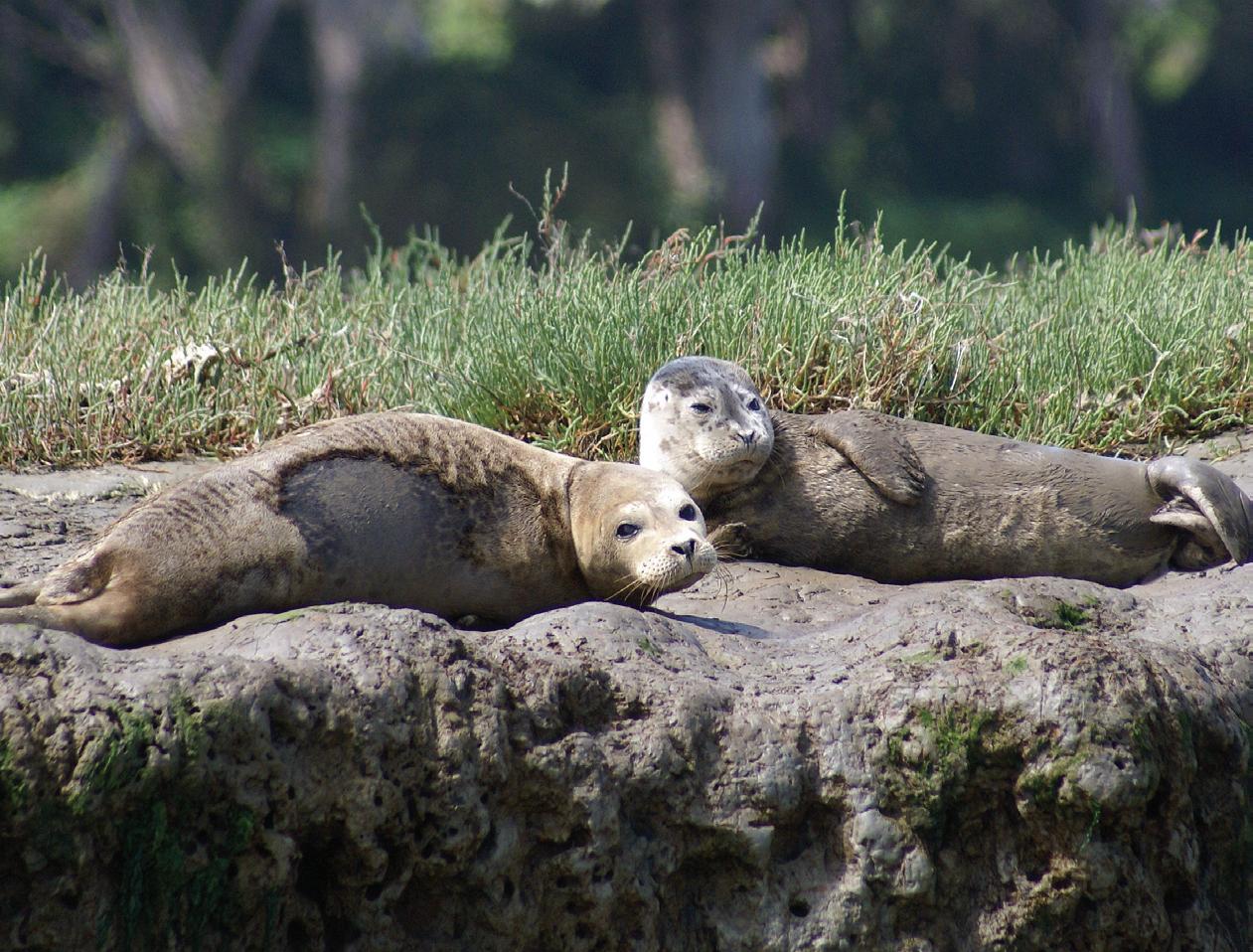
From Fish and Game’s perspective, non-profit “friends groups” give the Department portals into the community. This is often represented by how they populate their Board of Directors. Here at Elkhorn Slough, ESF’s Board members come from a variety of career fields. We have leaders in the agricultural and construction communities as well as representation from the regional environmental community. These folks know the landscape and workings of the Monterey Bay area well and help keep our focus dynamic, workable and relevant. ESF reaches out to find individuals that truly sustain the conservation efforts that occur here. For 30 years, ESF has been supporting the Reserve and Elkhorn Slough has benefited from this partnership.
In my experience, at its best, a core partnership like we have here with NOAA, the Elkhorn Slough Foundation and Fish and Game becomes the nucleus of an effort that continually develops and explores new ways to accomplish its mutual missions. We have truly become a symbiotic organism with a life force and an energy that have made the Monterey Coast a better place.
P.O. Box 267
Moss Landing, CA 95039
The Elkhorn Slough Reserve is open Wednesday through Sunday, 9am to 5pm. Join us for tours every Sunday morning. For information on events, call 831.728.5939 or visit: www.elkhornslough.org
SAVE THE DATE: Join us November 2nd to celebrate the Elkhorn Slough Foundation’s 30 year anniversary. More details to come.
In This Issue:
